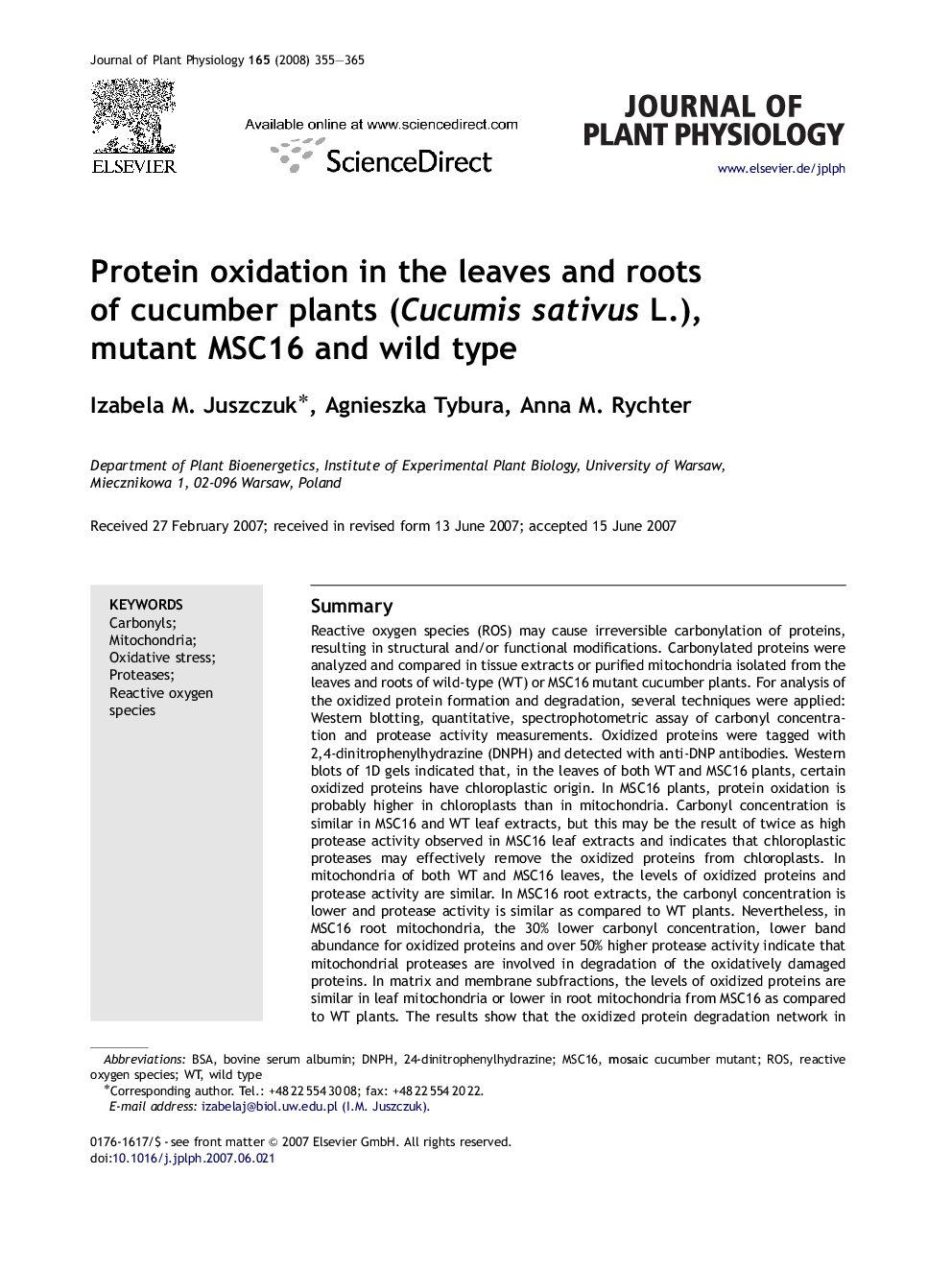| Article ID | Journal | Published Year | Pages | File Type |
|---|---|---|---|---|
| 2057626 | Journal of Plant Physiology | 2008 | 11 Pages |
SummaryReactive oxygen species (ROS) may cause irreversible carbonylation of proteins, resulting in structural and/or functional modifications. Carbonylated proteins were analyzed and compared in tissue extracts or purified mitochondria isolated from the leaves and roots of wild-type (WT) or MSC16 mutant cucumber plants. For analysis of the oxidized protein formation and degradation, several techniques were applied: Western blotting, quantitative, spectrophotometric assay of carbonyl concentration and protease activity measurements. Oxidized proteins were tagged with 2,4-dinitrophenylhydrazine (DNPH) and detected with anti-DNP antibodies. Western blots of 1D gels indicated that, in the leaves of both WT and MSC16 plants, certain oxidized proteins have chloroplastic origin. In MSC16 plants, protein oxidation is probably higher in chloroplasts than in mitochondria. Carbonyl concentration is similar in MSC16 and WT leaf extracts, but this may be the result of twice as high protease activity observed in MSC16 leaf extracts and indicates that chloroplastic proteases may effectively remove the oxidized proteins from chloroplasts. In mitochondria of both WT and MSC16 leaves, the levels of oxidized proteins and protease activity are similar. In MSC16 root extracts, the carbonyl concentration is lower and protease activity is similar as compared to WT plants. Nevertheless, in MSC16 root mitochondria, the 30% lower carbonyl concentration, lower band abundance for oxidized proteins and over 50% higher protease activity indicate that mitochondrial proteases are involved in degradation of the oxidatively damaged proteins. In matrix and membrane subfractions, the levels of oxidized proteins are similar in leaf mitochondria or lower in root mitochondria from MSC16 as compared to WT plants. The results show that the oxidized protein degradation network in MSC16 cucumber mutants is well developed, thus becoming a survival factor for plants with mitochondrial dysfunctions.
